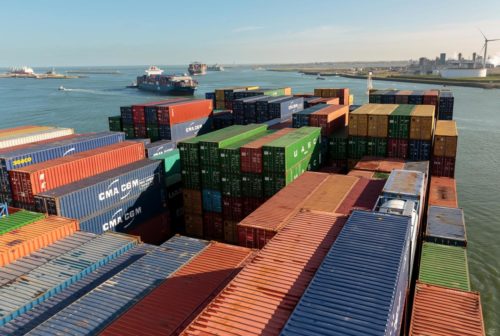Concurrently, Moody’s affirmed the Baa3 long-term issuer rating of the company.
“Following a very strong performance amidst the global pandemic by the container shipping industry, Maersk’s credit metrics have continued to strengthen during the first half of 2020,” says Daniel Harlid, lead analyst for Maersk.
As disclosed, a continuation of the recent performance and credit metrics improvements trend could support further positive rating pressure over the next 12 to 18 months.
The container shipping market has performed very strongly amidst the global pandemic, where all carriers have exhibited discipline in terms of adjusting capacity to decreased demand during the first half of 2020.
Moody’s said volumes during the third quarter have been stronger than expected, in combination with equipment shortages on some trade lanes, sending up freight rates higher than at the start of the year.
Coupled with low bunker prices, carriers have recorded double digit growth rates in EBITDA during this time period compared to the first half of 2019.
“In light of how the industry is currently behaving, coupled with continued low bunker prices and relatively high freight rates and strong volumes during Q3, Moody’s believes the second half will be even better in terms of operating performance,” the rating agency said.
The rating action is also based on Maersk’s efforts to continue to focus on becoming an integrated shipping and logistics company and adjust its capital structure thereafter.
During this period, the company has paid down large amounts of debt while simultaneously increased profitability for the remaining business resulting in continued positive free cash flow generation over the last years.
Maersk’s counterparts like CMA CGM and Hapag-Lloyd have also received a positive boost from credit rating agencies.
S&P Global Ratings revised CMA CGM’s outlook to positive on expected stronger financial performance, affirming the company’s B+ ratings.
The rating agency expects CMA CGM to report a significantly higher EBITDA in 2020, due to a less severe decline in global trade volumes than previously forecast.
The outlook change has also been assigned to the company’s improved cash generation and lower debt.
The agency also raised the credit rating for German liner major Hapag-Lloyd from ‘B+’ to ‘BB-‘ with a ‘positive’ outlook, which is the highest credit rating assigned to Hapag-Lloyd since the research initiation by S&P in 2010.
Additionally, the senior unsecured bond rating was raised to ‘B’ from ‘B-‘.
S&P expects Hapag-Lloyd to continue its solid 2019 EBITDA performance in 2020 amid strengthened cash flow generation.
Furthermore, S&P recognised that Hapag-Lloyd has outperformed its cost-reduction targets.
“Going forward, our prudent financial policy remains unchanged with a clear focus on profitability, cost control, debt reduction and balance sheet stability. At the same time we are focusing on the consequent implementation of our Strategy 2023,” said Mark Frese, Chief Financial Officer of Hapag-Lloyd AG.
Moving forward, carriers are likely to face challenges in the form of deterioration in the capacity discipline by carriers, the looming threat of additional lockdowns as well as increased trade tension between the US and China.
However, strong liquidity positions are likely to cushion some of these risks without jeopardizing continued positive rating pressure.
